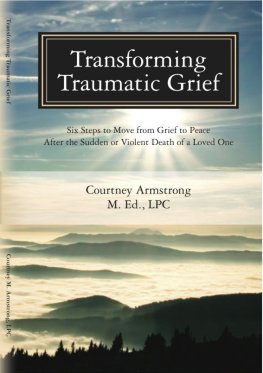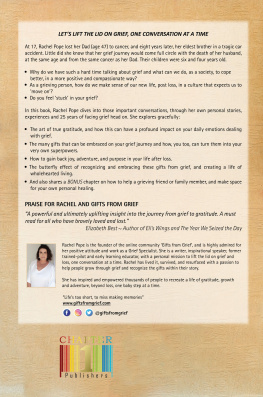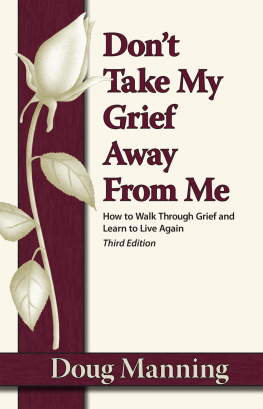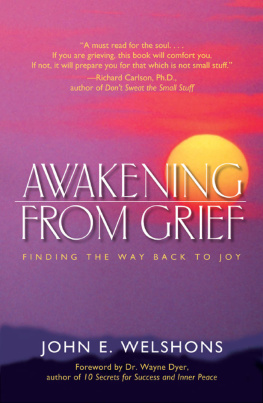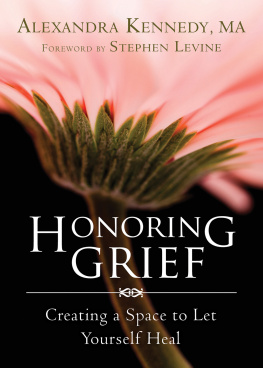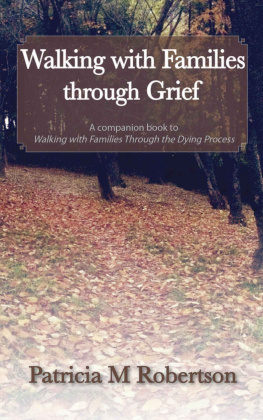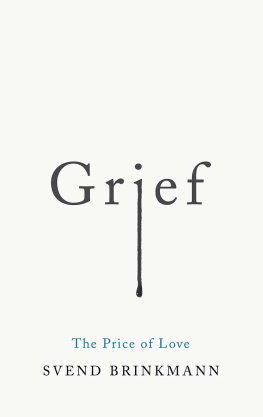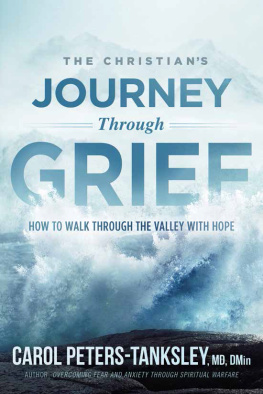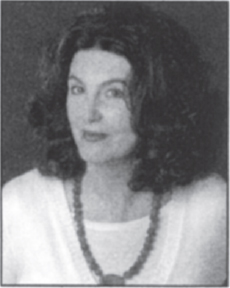IN ORDER TO protect the privacy of individuals and families, I have changed the names of the people in the stories you will readalthough in some cases, where the person agreed, I have used real names.
Some of the stories are composites of different experiences, which when combined, present powerful examples of what happens when violence strikes.
FOREWORD

by Dan Gottlieb, PhD, host of NPRs Voices in the Family
A GRIEF LIKE NO Other begins when Kathleen OHara picked up the telephone to find out that Aaron, the son she had recently sent to college, was missing. When I first heard Kathleens story, I could only begin to imagine her frantic worry, the passionate wishes and prayers, and the inevitable nightmares that raced through her mind. I could try to imagine her terror because, as a parent, I have experienced fear bordering on terror when my children were not where they should be. But when I heard about the next callthe one that confirmed her worst nightmare that Aaron was murderedI was no longer able to imagine her reaction.
Almost all of us will experience trauma at some point in our lives. Sometimes trauma begins with a doctor saying, We have to talk or a spouse telling us they want a divorce. Whatever form it takes, all trauma causes suffering. Some trauma we can identify with. Some trauma is unimaginable. All trauma isolates and alienates, but when no one dare imagine what you are experiencing, you are exquisitely alone with your pain.
Thats why I was so surprised to hear Kathleen OHara was willing and able to talk about her tragedy on the radio. Four years ago I invited her to be a guest on my Voices in the Family radio show aired on WHYY in Philadelphia. When I went down the elevator to meet her in the lobby of the studio, I expected to see a woman in acute griefpale complexion, rounded shoulders, and poor eye contact. I was prepared to be gentle and caring even though I was afraid to imagine what she was feeling.
Yet despite everything I imagined, I was greeted by a woman with clear eyes and a warm engaging smile that seemed to say, Its okay, we can talk about this.; In that moment, I realized that I was the one afraid to make eye contact. I felt both ashamed of my temer-ity and care for this amazing woman. All in one smile. Immediately, I wanted to get to know her better, to understand how she could survive this nightmare. I wanted to know where this agony lives in her head and heart and how she is able to function. I wanted to know all these things only partly because I thought it would be a painful but important radio show. On a deeper level, I wanted to know these things because I felt Kathleen OHara could add to my understanding of what it means to be human.
I was right. The show was powerful, as she told her horrible story in a way that was open, honest, and painful. In the years that followed, I have discovered I was also right about what she has to teach. I have come to know Kathleen as neither hero nor victimjust a woman who has endured tragedy and has been able to use the tools of her counseling training and her own spiritual background to cast a clear eye on the nature of trauma and recovery.
Research tells us that many people recover from trauma, depending on its severity. Those who make meaning out of their suffering are more likely to be resilient. The book you hold in your hand clearly represents Kathleens insightful effort to make meaning out of her suffering. But because of her training, wisdom, and clear thinking, this book helps us understand the human response to tragedy.
Using her own story as background, Kathleen guides us through seven clear steps that begin with telling the story and slowly guide us through finding resources, facing pain, generating creativity, and discovering the New Worldthe place where survivors will find themselves after experiencing the seven stages found here. For those left behind in the wake of violence, the New World is a necessary destinationa place that allows survivors to live with the trauma and celebrate life in the face of extraordinary pain.




